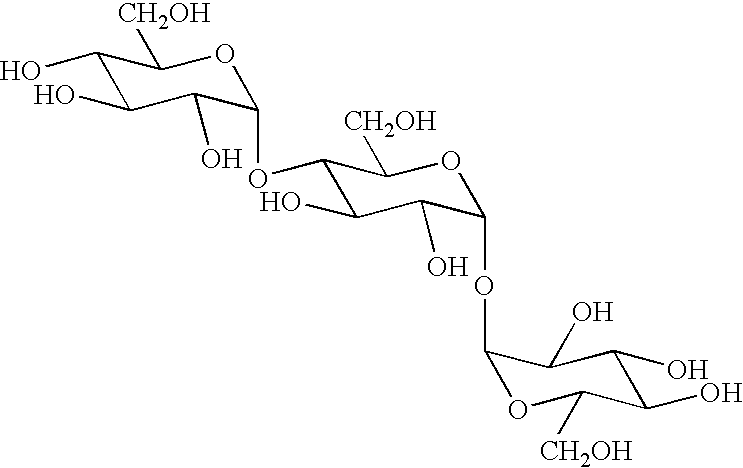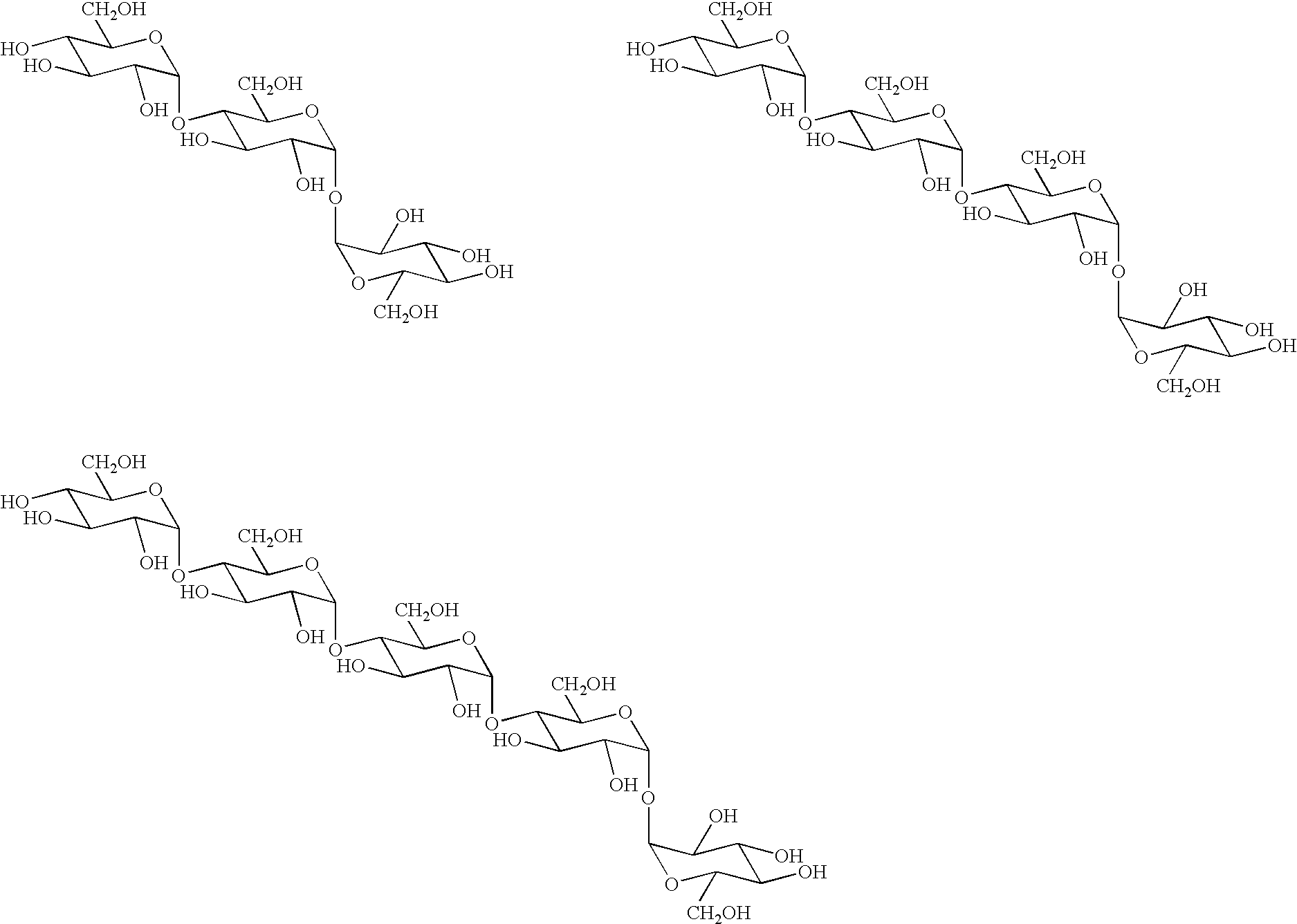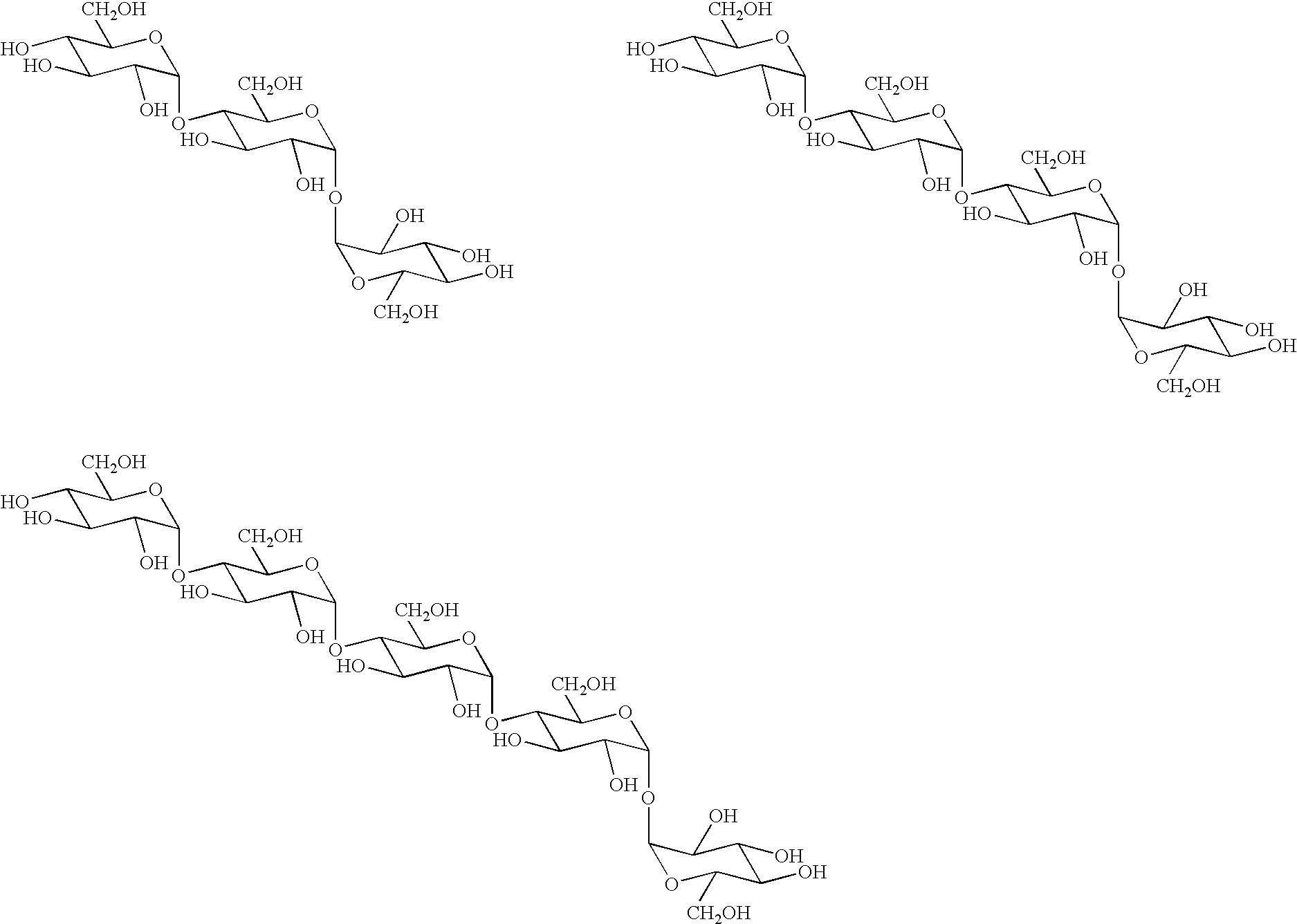Novel transferase and amylase, process for producing the enzymes, use thereof, and gene coding for the same
a transferase and amylase technology, applied in the field of new transferase and amylase, can solve the problems of low cost production, low efficiency of transferase, and high cost of trehalose, and achieve the effects of low cost production, low cost, and low cos
- Summary
- Abstract
- Description
- Claims
- Application Information
AI Technical Summary
Benefits of technology
Problems solved by technology
Method used
Image
Examples
example i-1
Glucosyltrehalose-Producing Activities of Archaebacteria
[0273] The bacterial strains listed in Table 3 below were examined for glucosyltrehalose-producing activity. The examination was performed as follows: The cultivated bacterial bodies of each strain was crushed by an ultrasonic treatment and centrifuged; the substrate, maltotriose, was added to the supernatant so that the final concentration would be 10%; the mixture was then put into a reaction at 60.degree. C. for 24 hours; after that, the reaction was stopped by a heat-treatment at 100.degree. C. for 5 min.; and the glucosyltrehalose thus produced was subjected to a measurement according to the HPLC analysis under the below-described conditions.
3 Column: TOSOH TSK-gel Amide-80 (4.6 .times. 250 mm) Solvent: 75% acetonitrile Flow rate: 1.0 ml / min. Temperature: Room temperature Detector: Refractive Index Detector
[0274] The enzyme activities were expressed with such a unit as 1 Unit equals the activity of converting maltotriose i...
example i-2
Purification of the Present Transferase Derived from the Sulfolobus solfataricus Strain KM1
[0277] The Sulfolobus solfataricus strain KM1 was cultivated at 75.degree. C. for 3 days in the culture medium which is identified as No. 1304 in Catalogue of Bacteria and Phages 18th edition (1992) published by American Type Culture Collection (ATCC), and which contained 2 g / liter of soluble starch and 2 g / liter of yeast extract. The cultivated bacteria was collected by centrifugation and stored at -80.degree. C. The yield of the bacterial cell was 3.3 g / liter.
[0278] Two hundred grams of the bacterial cells obtained above were suspended in 400 ml of a 50 mM sodium acetate buffer solution (pH 5.5) containing 5 mM of EDTA, and subjected to an ultrasonic treatment for bacteriolysis at 0.degree. C. for 15 min. The resultant was then centrifuged to obtain a supernatant, and ammonium sulfate was added to the supernatant so as to be 60% saturation.
[0279] The precipitate obtained by centrifugation wa...
example i-3
Purification of the Present Transferase Derived from Sulfolobus solfataricus strain DSM 5833
[0287] The Sulfolobus solfataricus strain DSM 5833 was cultivated at 75.degree. C. for 3 days in the culture medium which is identified as No. 1304 in Catalogue of Bacteria and Phages 18th edition (1992) published by American Type Culture Collection (ATCC), and which contained 2 g / liter of soluble starch and 2 g / liter of yeast extract. The cultivated bacteria was collected by centrifugation and stored at -80.degree. C. The yield of the bacterial cell was 1.7 g / liter.
[0288] Fifty six grams of the bacterial cells obtained above were suspended in 100 ml of a 50 mM sodium acetate buffer solution (pH 5.5) containing 5 mM of EDTA, and subjected to an ultrasonic treatment for bacteriolysis at 0.degree. C. for 15 min. The resultant was then centrifuged to obtain a supernatant.
[0289] Next, ammonium sulfate was dissolved in the supernatant so that the concentration of ammonium sulfate would be 1 M. The...
PUM
| Property | Measurement | Unit |
|---|---|---|
| temperature | aaaaa | aaaaa |
| pH | aaaaa | aaaaa |
| temperature | aaaaa | aaaaa |
Abstract
Description
Claims
Application Information
 Login to View More
Login to View More - R&D
- Intellectual Property
- Life Sciences
- Materials
- Tech Scout
- Unparalleled Data Quality
- Higher Quality Content
- 60% Fewer Hallucinations
Browse by: Latest US Patents, China's latest patents, Technical Efficacy Thesaurus, Application Domain, Technology Topic, Popular Technical Reports.
© 2025 PatSnap. All rights reserved.Legal|Privacy policy|Modern Slavery Act Transparency Statement|Sitemap|About US| Contact US: help@patsnap.com



